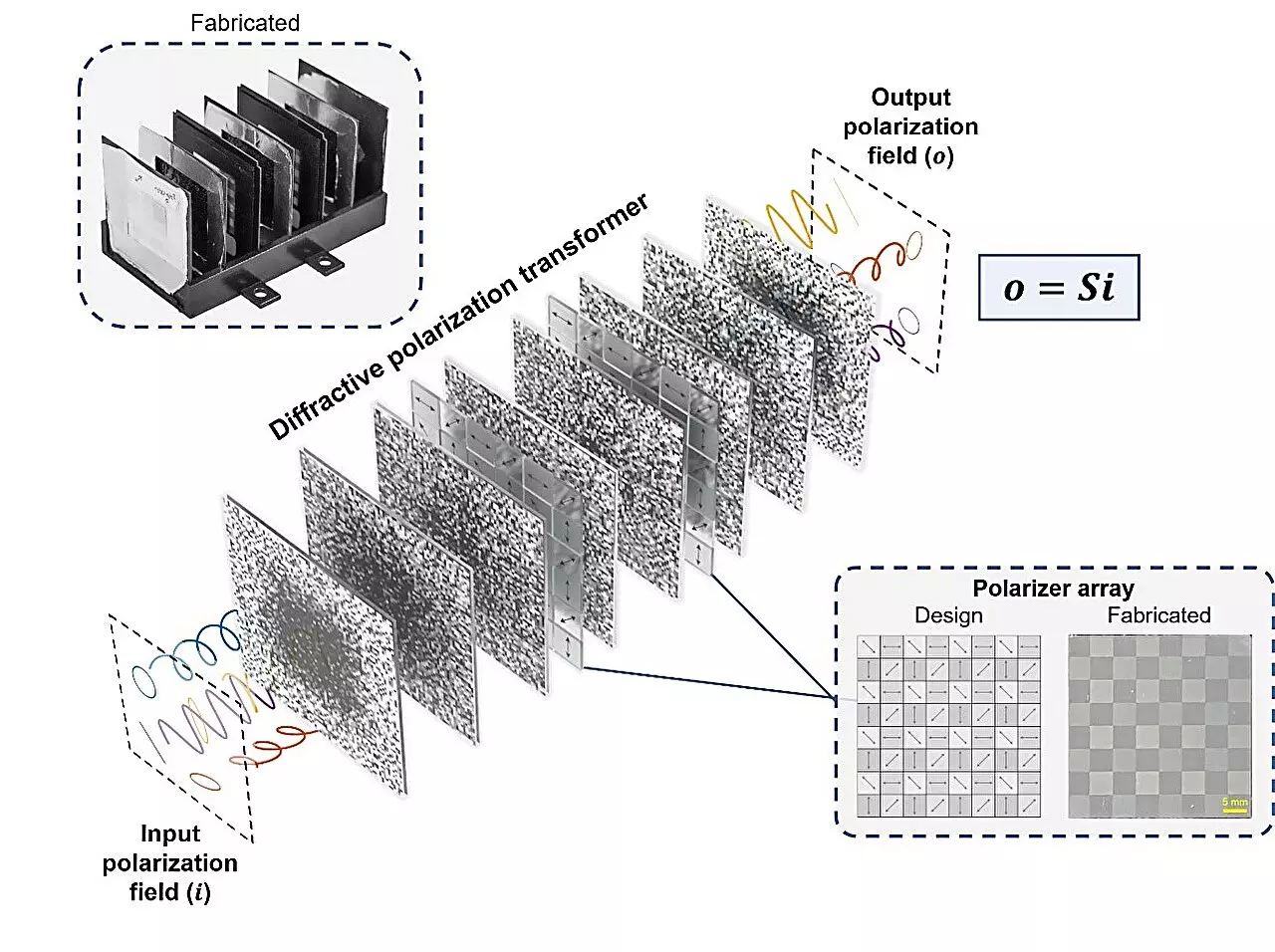Polarization is a fundamental concept in the field of optics, playing a crucial role in various applications such as sunglasses, camera lenses, optical communication, and imaging systems. The ability to understand and control the polarization of light is essential for advancing optical technologies. However, the manipulation of the spatial distribution of polarization states poses significant challenges, especially when dealing with non-uniform fields. Existing polarization modulation devices have limited capabilities and can only work with predefined polarization states. A team of researchers at UCLA has introduced a revolutionary design for a polarization transformer diffractive network, offering a new pathway for universal polarization transformations in spatially varying polarization fields.
The diffractive network developed by the UCLA research team allows for the all-optical synthesis of complex-valued, arbitrarily-selected polarization scattering matrices between different locations within the input and output fields-of-views. This breakthrough is achieved through supervised deep learning, where the diffractive polarization transformer consists of multiple isotropic diffractive layers. Each layer is coded with thousands of diffractive features at the subwavelength level, which can be optimized for transmission coefficients. Additionally, 2D arrays of linear polarizers are incorporated between these diffractive layers to introduce polarization anisotropy. This unique optical architecture enables a single diffractive polarization transformer to implement a vast number of spatially-encoded polarization scattering matrices within a compact volume.
To validate the feasibility of their design, the UCLA team conducted experiments using wire-grid polarizers fabricated through photolithography and 3D-printed diffractive layers. The proof-of-concept design successfully performed user-defined polarization permutation operations in the terahertz part of the electromagnetic spectrum. The fabricated diffractive polarization transformer demonstrated the ability to simultaneously implement various spatially-encoded polarization scattering matrices, effectively transforming the input polarization states to the desired spatially varying polarization states at the output. The experimental results aligned well with the numerical simulations and design objectives, proving the efficacy of this new approach to polarization manipulation.
Building upon their success, the UCLA researchers have plans to further enhance their designs for broadband illumination. They aim to enable simultaneous processing of amplitude, phase, polarization, and spectral features encoded in optical fields. The implementation of diffractive polarization transformers can revolutionize machine vision systems, introducing polarization-aware object detection and classification capabilities. Such advanced systems would find applications in various fields including remote sensing, security/defense, material inspection, and medical imaging. The ability to manipulate the polarization of light in a universal and precise manner opens doors to a wide range of possibilities for optical technologies.
The design of a diffractive polarization transformer presented by the UCLA research team offers a groundbreaking solution for universal polarization transformations in spatially varying polarization fields. By employing supervised deep learning and a unique optical architecture, this new technology surpasses the limitations of existing polarization modulation devices. The experimental validation of the diffractive polarization transformer confirms its feasibility and potential for further development. The future applications of this technology are vast, with the ability to enhance machine vision systems and revolutionize various industries. The future of polarization manipulation in optical technologies is here, thanks to the groundbreaking work of the UCLA researchers.


Leave a Reply